Learn how to make your own herbal muscle rub. This recipe makes three 2-oz tins.
One of the things I’ve been really interested in recently is diving deeper into the benefits of herbs and essential oils.
Any time I can use things I’m growing in the garden for pain relief, or at the very least- things that occur in nature – I’m intrigued.
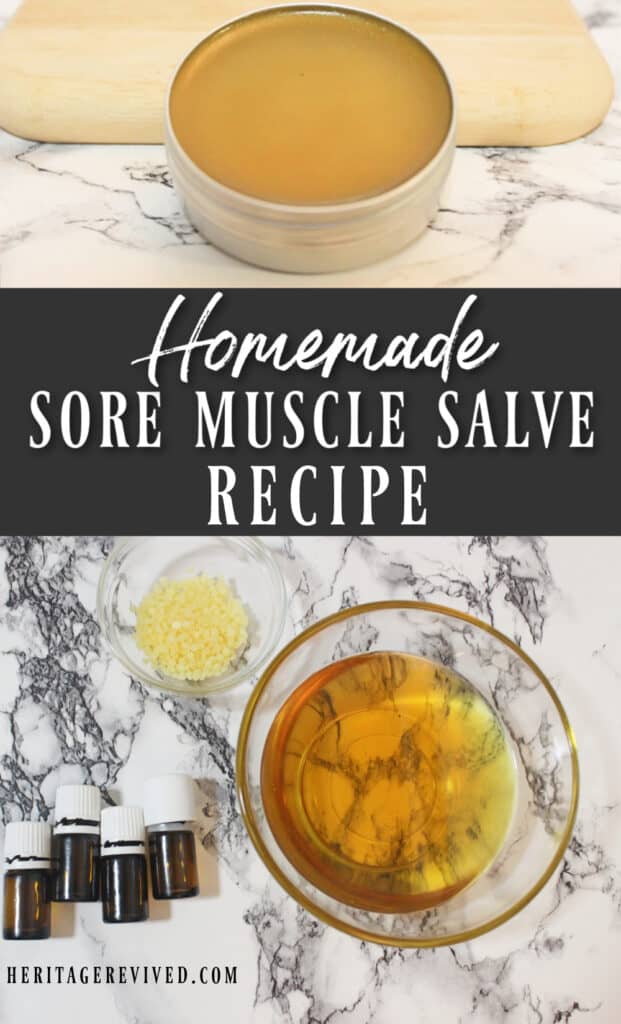
After pulling weeds in the garden all afternoon, it’s nice to know there are things from the garden that can address the pain it causes!
Herbal Salve for Sore Muscles
There was a time, of course, when herbal remedies were the only remedies. People knew how to grow or procure their own medicine, and it was invaluable knowledge.
Today, we have so many options when it comes to relieving something such as sore muscles. For me, I’m more aware than ever of the benefits versus potential side effects of the not-so-natural pain relievers in my medicine cabinet.
Not to mention, there have been shortages of certain store-bought remedies lately. Why not learn what we can about natural remedies, just in case?
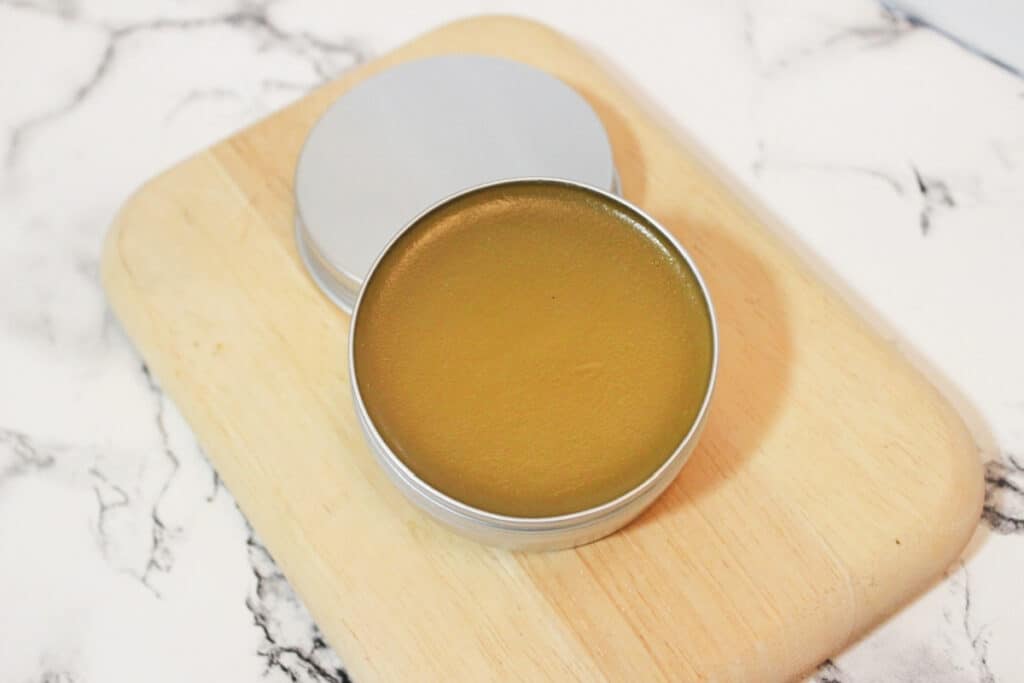
This site contains affiliate links to products. As an Amazon associate, I earn from qualifying purchases. Please read my disclosure for more info.
Choosing Ingredients for Herbal Muscle Rub Recipe
Below is a brief explanation of the ingredients used in this sore muscle salve recipe. Feel free to research the benefits of other herbs and essential oils that might also target your specific needs.
If you’re already growing medicinal herbs in your garden, for instance, you can easily swap them out, and experiment with different combinations.
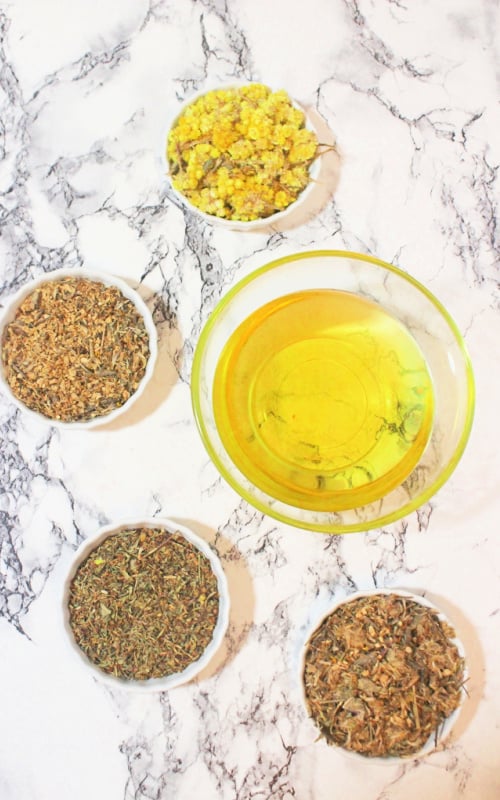
As always, read up or obtain professional consultation on these and any herbs and essential oils and understand how to safely use them beforehand.
Helichrysum flowers (Strawflower)
Are flowers herbs, you might ask? Most gardeners consider an “herb” anything that has healing or therapeutic properties.
The genus Helichrysum encompasses a large family of flowering plants. It is often called “Everlasting Flowers” as they have an extremely long shelf life when dried, and retain their color as well. Another common name is Strawflower.

There are many varieties of helichrysum seeds you can find online if you want to grow your own flowers. This is the most economical way to harvest the anti-inflammatory and analgesic properties of helichrysum.
The essential oil form is another option, though it’s one of the more pricey essential oils.
I’ve grown this version from Baker Creek Seed Company the last few years.
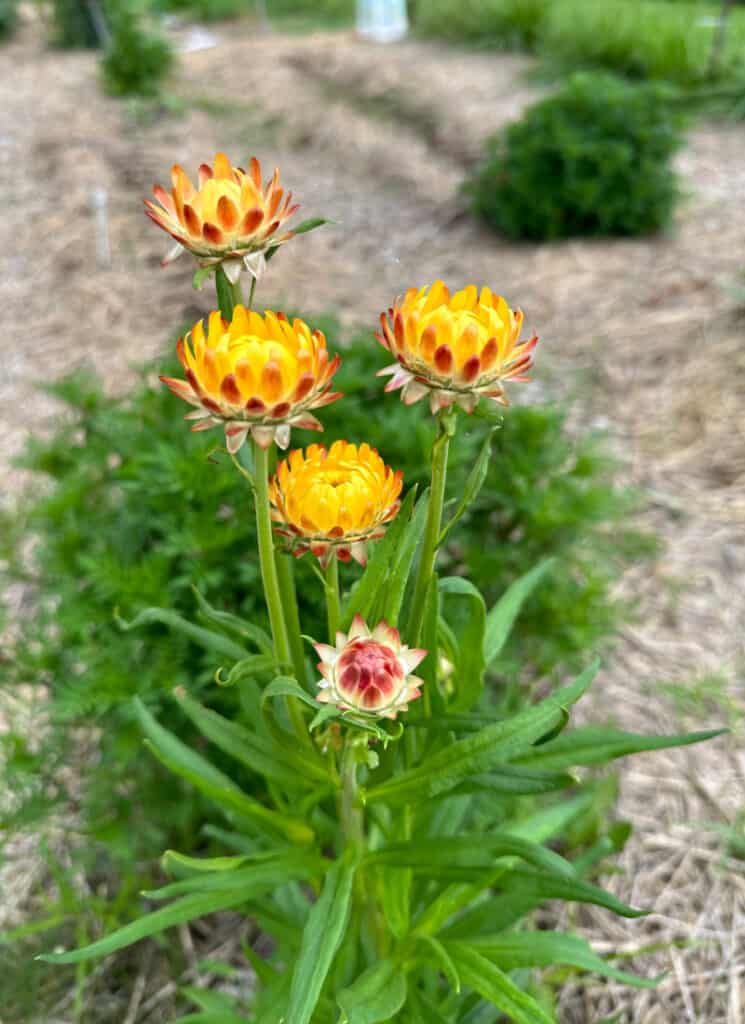
Gotu Kola
Another herb that you can grow, buy dried, or as an essential oil. It’s known for numerous healing properties in Chinese medicine. One study even called it a “Potential herbal cure-all”.
Sounds like a perfect ingredient for an herbal muscle rub recipe, right?
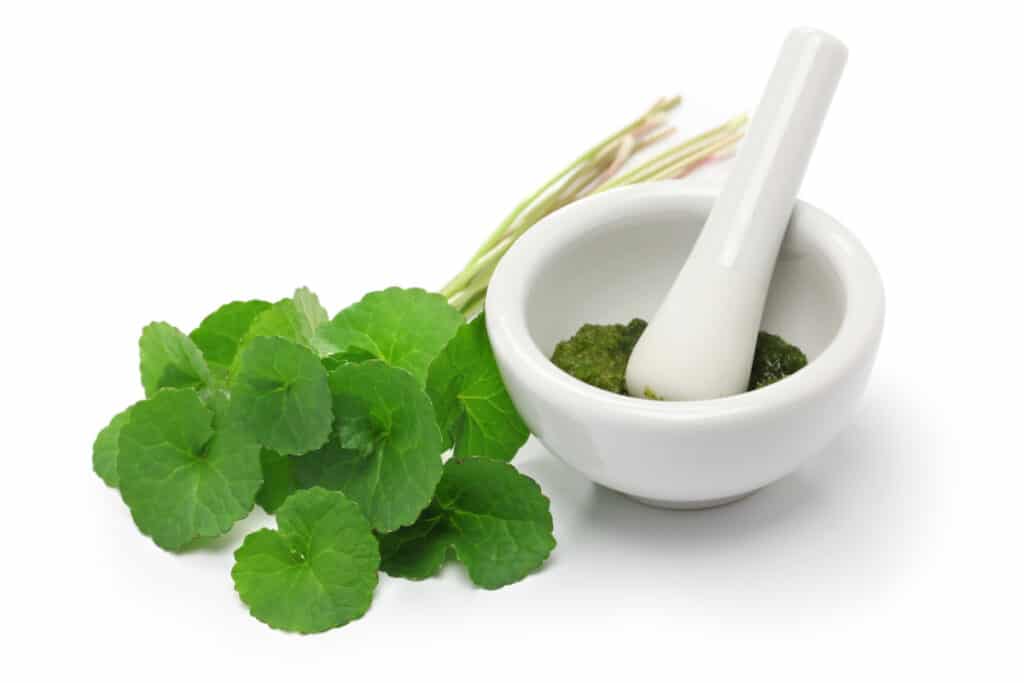
In my research, it is meant to grow in zones 9b and above, which makes it a no-go in my 6b zone.
The dried herb will last quite a while for my purposes, though, and that’s what I’m using in this recipe.
Ginger Root
One of the more familiar ingredients to most of us, ginger is also known for reducing inflammation.
In this recipe, we’re using dried ginger root and also ginger root essential oil.
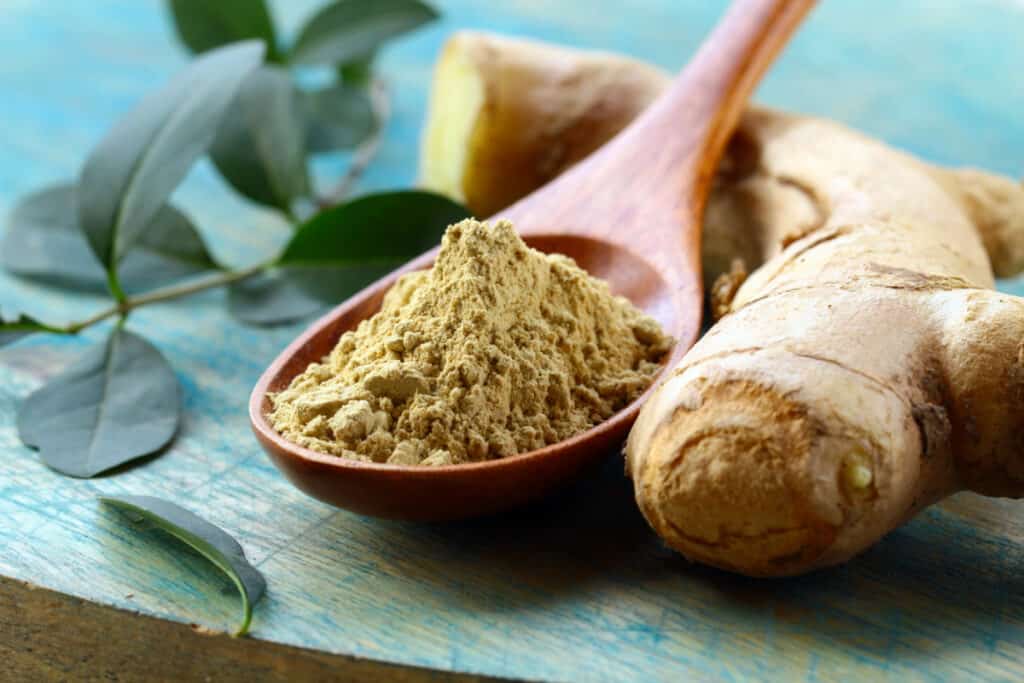
Arnica
Arnica flowers have numerous benefits in the garden, but they are also used for their anti-inflammatory benefit when dried.
You can easily grow your own flowers and harvest the blossoms, or buy them dried.
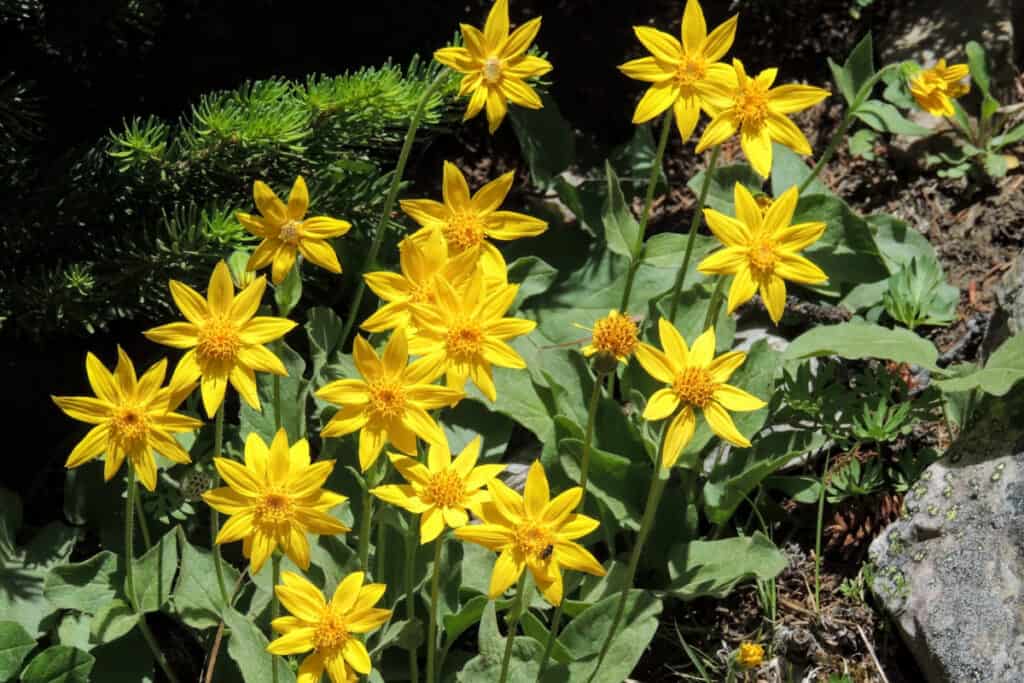
Oil and Beeswax
Avocado oil is simply a good, clean oil for using topically on the skin. And, delicious and healthy for cooking – so it won’t go to waste at my house!
However, you can use any carrier oil in this herbal muscle rub recipe, including olive oil or fractionated coconut oil.
Unless you raise your own bees or have a local source for beeswax, you will want to buy beeswax pellets for this DIY muscle rub. Maybe buy in bulk and make some candles later? (Super fun, by the way.)
Using more beeswax will result in a firmer salve; using less will make it softer. How much you use is up to your preference.
Essential oils

Wintergreen is commonly used for muscle pain, as it can both warm and sooth tired muscles.
You may have heard of using Copaiba for a toothache. Using it on sore muscles can have similar benefits of pain relief.
Ginger root essential oil is added to boost the anti-inflammatory benefit of ginger.
Clove oil is another warming, anti-inflammatory oil, among many other uses.
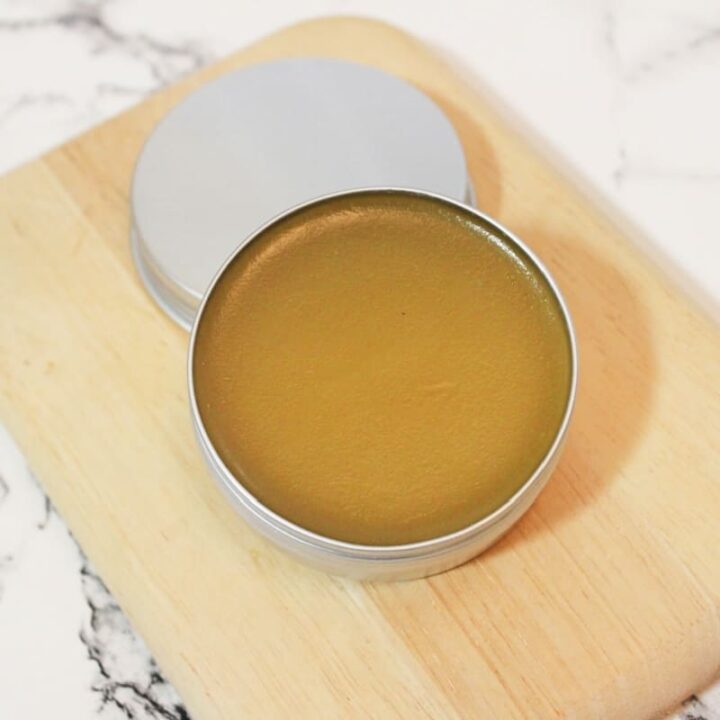
Herbal Muscle Rub Recipe (DIY Salve)
Follow these steps for an herbal muscle rub that can help ease soreness, naturally.
Ingredients
For the Infused Oil:
- ¼ cup Helichrysum flowers
- ¼ cup Gotu Kola
- ¼ cup Ginger root
- ¼ cup Arnica
- 1 ½ cup avocado oil
For the Salve:
- 1 cup infused oil
- 1 ½ -3 tablespoons beeswax pellets (depending on how thick you want them)
- 5-10 drops of wintergreen essential oil
- 5-10 drops of copaiba essential oil
- 5 drops of ginger root essential oil
- 5-10 drops of clove essential oil
Tools Needed:
- Glass Jar
- Double Boiler or Small Pot
- Strainer, unbleached coffee filter, or cheesecloth
- Microwave safe bowl
- Spatula
- Three 2-oz tins
Instructions
- Combine the helichrysum, goto kola, ginger root, and arnica into your glass jar.
- Pour the avocado oil into the glass jar to completely cover the herbs and have about an inch over the herbs.
- Use a double boiler or a pot and a little bit of water to heat the infused oil on your stove. Use a low setting for about 4-6 hours. Allow it to cool. Or, you can keep it in a cool, dark cupboard for 4-6 weeks if you don’t want to use the heat method.
- Put the coffee filter on top of another glass jar and strain the herbs from the oil. You can also use a strainer as well.
- Combine the beeswax and infused oil and heat on the double boiler until melted. Alternatively, you can also heat it in the microwave at 30-second intervals until it all melts.
- Add in your drops of essential oils and stir well.
- Pour the oil into your three tin containers.
- Allow them to sit uncovered for 4-6 hours or overnight until they harden up.
Learn more about using herbs for pain relief and more
Rosemary Gladstar’s Medicinal Herbs is a great starter book for learning to grow, harvest, and reap the benefits of herbs.
One of my favorite things about this book is that it focuses on herbs that have a wide variety of uses, and are easy to grow. I started with several of these in my first-year herb garden.
Let us know which herbs and oils you like to use for muscle aches, in the comments below.
You might also like:
Beginner’s guide to Living More Self-Sufficiently
Thanks.
Hope you enjoy it!